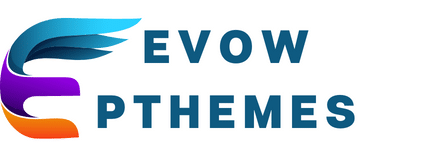The world of contact sports has long been the subject of medical and scientific study regarding the risk of injuries. Football, rugby, or hockey players often face the risk of concussions due to the high impact nature of these games. One significant area of focus has been the design and use of helmets. In this article, we delve into the role of modern helmet technology in preventing concussions in ice hockey players. We will explore the function of helmets, the impact of acceleration on head injuries, and how data drives today’s helmet technology.
The Protective Role of Helmets in Sports
The foremost role of a helmet in any sport is to provide protection. This is especially vital in ice hockey where players are at risk of falling on the hard ice surface or being struck by high-speed pucks. Helmets are a layer of defense that can significantly minimize the risk of head injuries and concussions.
A lire en complément : What’s the Best Way to Implement Virtual Reality for Cricket Umpire Training?
A helmet does more than just cover a player’s head. It absorbs and diffuses the force of impacts, thereby reducing the acceleration that the head experiences. Acceleration, as we will explore later, is a key factor in the occurrence of concussions. The proper fit of a helmet is equally essential to ensure optimal protection.
Impact Acceleration and Risk of Concussion
The link between impact acceleration and the risk of a concussion is well established in scientific literature. When a player experiences an impact, the force is transferred to the head, leading to it moving abruptly. This sudden movement can cause the brain to move within the skull, potentially leading to brain injuries or concussions.
Avez-vous vu cela : What’s the Best Way to Utilize Resistance Bands in Aquatic Therapy for Swimmers?
To understand this, think of the brain as a delicate object within a box. If the box (in this case, the head) is rapidly moved or shaken, the object (the brain) inside also moves, possibly hitting the walls of the box. This causes damage. The role of the helmet, therefore, is to absorb as much of this force as possible to diminish the acceleration of the head and subsequent movement of the brain inside the skull.
Harnessing Data to Improve Helmets
In the quest to design better helmets, data has become an invaluable resource. By collecting and analyzing data from various sources such as game footage, player health records, and even sensors in helmets, designers can get an accurate picture of the impacts that players face.
For instance, sensors embedded in helmets can provide real-time data on the force, direction, and acceleration of impacts. This data can then be used to understand what kinds of impacts are most likely to lead to concussions. It provides designers the insights needed to develop helmets that are better equipped to absorb these specific kinds of impacts.
Using data in this way allows for a more targeted approach in helmet design. Rather than designing helmets that are generally good at absorbing impacts, designers can now create helmets that are specifically optimized for the kinds of impacts that players are most likely to experience.
STAR Ratings: A Benchmark for Helmet Safety
A significant development in the field of helmet safety is the Standardized Assessment of Concussion (STAR) rating system. Designed by the Virginia Tech Helmet Lab, the STAR system evaluates and grades helmets for their ability to reduce the risk of concussions.
Using a five-star scale, the system rates helmets based on their ability to absorb impact energy and reduce head acceleration. Helmets that do a better job of absorbing energy and minimizing acceleration earn a higher star rating.
The STAR system provides players, coaches, and parents a clear and reliable benchmark for choosing a helmet. It also encourages manufacturers to improve their designs to earn a higher rating.
The Future of Helmet Technology
Looking ahead, the future of helmet technology seems promising. With advancements in materials science and digital technology, helmets are becoming more efficient at absorbing impacts and reducing the risk of concussions.
One of these advancements is the use of multi-layered foam in helmets. These layers are capable of absorbing different levels of impact energy, providing more comprehensive protection. Other innovations include the use of sensors that can detect and measure the force of impacts in real-time, providing valuable data for both immediate medical response and long-term helmet design improvements.
The ultimate goal is to create a helmet that can mitigate as much of the risk of concussion as possible. While no helmet can prevent all concussions, the advancements in technology are making it increasingly possible to protect players from these potentially debilitating injuries.
Linear and Rotational Acceleration in Concussions
Understanding the mechanisms of concussion necessitates a focus on both linear and rotational acceleration. Linear acceleration refers to the head’s movement in a straight line, often resulting from a direct impact. On the other hand, rotational acceleration involves the head’s rotation or twisting movement, which can occur with oblique or side-on impacts.
According to numerous studies documented on PubMed Google and Google Scholar, both linear and rotational accelerations contribute significantly to the risk of concussions. Many researchers assert that rotational acceleration is especially dangerous because it can lead to a greater distribution of shear stress across the brain. This stress could result in diffuse brain injuries which are typically more serious and harder to diagnose.
Modern helmet technology aims to minimize both types of acceleration. For instance, some football helmets are designed with specific padding structures that can help decrease both linear and rotational accelerations during impacts. Similarly, youth ice hockey helmets are increasingly incorporating features that reduce the rotational acceleration upon impact.
Moreover, high school and professional hockey organizations are now more aware of the dangers posed by both types of accelerations, thanks to the wealth of free articles and PMC free resources available. This increased awareness has resulted in a push for more comprehensive helmet safety standards and rules requiring players to wear the highest-rated helmets available.
Monitoring Head Impacts in Real-Time
Another frontier in concussion prevention in sports is the real-time monitoring of head impacts. This technology involves embedding sensors in helmets to measure the force, direction, and acceleration of each impact a player encounters during a game.
These sensors can send data instantly to medical staff on the sidelines, enabling them to respond promptly if a player experiences a potentially dangerous hit. This immediate feedback can be crucial in diagnosing and treating concussions quickly, potentially preventing severe long-term damage.
Real-time head impact monitoring also provides invaluable data for researchers and helmet manufacturers. The collected data can be analyzed to identify trends, such as the most common types of impacts leading to concussions in hockey players. This information can then be used to design helmets that offer better protection against these specific types of impacts.
In fact, these advancements in technology are already being put to use. For example, the monitoring of head impacts has led to the development of football helmets that are better equipped to reduce the risk of concussions.
Conclusion: Towards Safer Sports Through Advanced Helmet Technology
The risk of concussions is an unavoidable part of contact sports like ice hockey. However, advancements in helmet technology are playing a crucial role in mitigating this risk. From harnessing data to improve helmet designs to the development of the STAR rating system for helmet safety, it is evident that science and technology are at the forefront of concussion prevention.
The use of multi-layered foam in helmets and real-time monitoring of head impacts are among the cutting-edge strategies being employed to keep athletes safe. Looking ahead, as we continue to gain more insights into concussions and how to prevent them, we can expect further advancements in helmet technology.
While no helmet can offer complete protection against concussions, every improvement brings us one step closer to the ultimate goal: ensuring the safety and well-being of athletes. As we continue to leverage the power of modern technology, there is hope for a future where sports can be enjoyed with significantly reduced risk of brain injuries.












